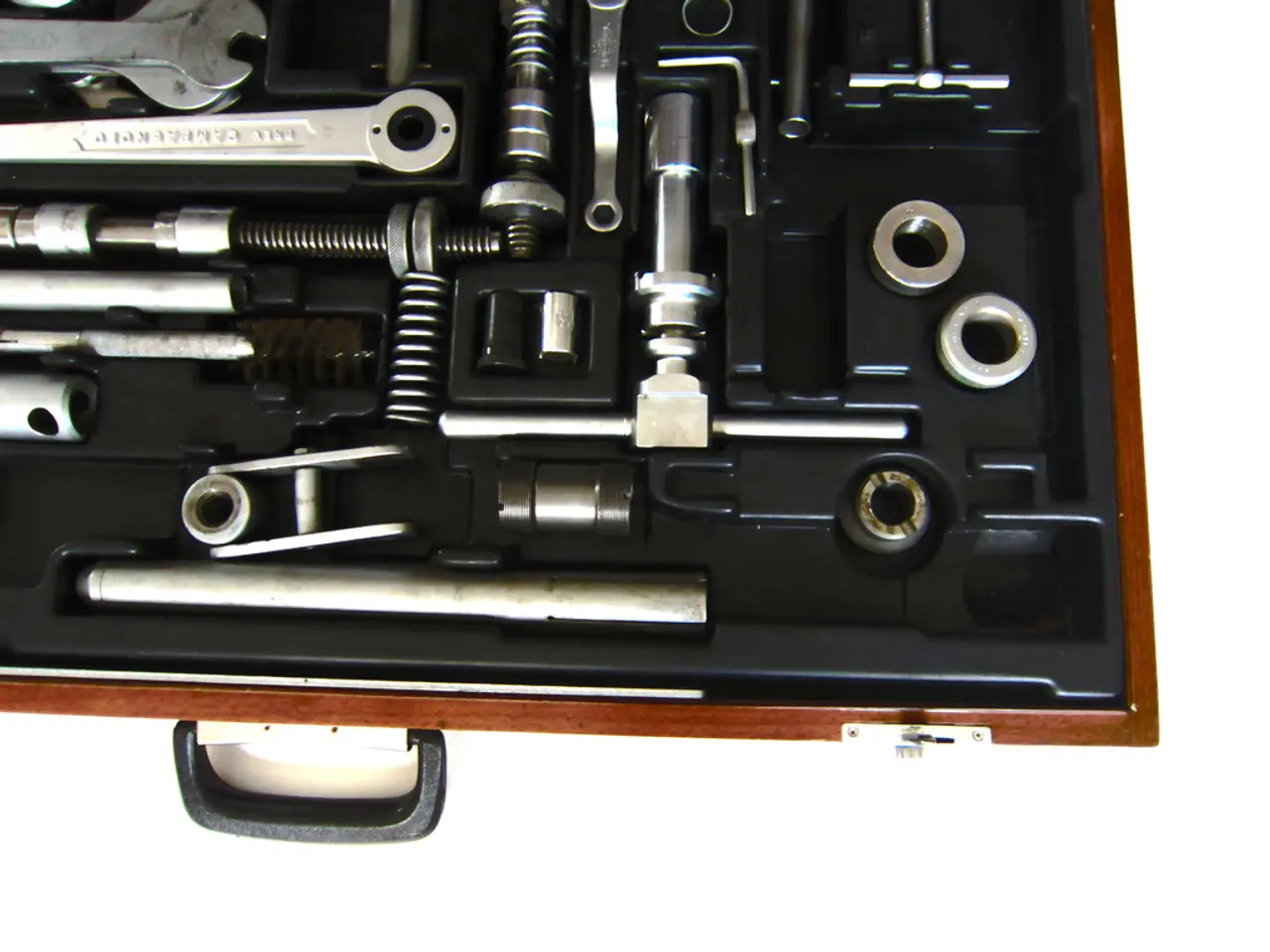Understand the utility and importance of a coping saw for your self-made projects toolkit.
======================================================================================
In the realm of woodworking and DIY projects, the coping saw stands as an indispensable tool for crafting intricate curved or rounded shapes. This venerable instrument, with its origins dating back centuries, continues to be a go-to choice for artisans and home enthusiasts alike.
The coping saw's unique design, comprising a U-shaped metal frame, a wooden handle, and a narrow blade held in place by pins, offers more control than other saws, particularly when it comes to cutting shapes and curves in decorative features. This narrow blade excels in cutting through intricate patterns and tight curves, a feat that other saws may find challenging.
The coping saw's versatility lies in its variety of available blades, each with a different number of teeth per inch (TPI). For instance, a 24 TPI blade is ideal for cutting curves and intricate shapes, providing a smooth finish. On the other hand, a 15-18 TPI blade is commonly chosen for everyday cuts, while specialist wire blades with an abrasive surface are perfect for precise cuts on ceramics, such as tiling a kitchen splashback, a bathroom, or floors.
When it comes to woodworking, the coping saw is invaluable. It is used to cut intricate curved or rounded shapes, such as fitting wooden floorboards around door frames, shaping door jambs, and crafting decorative mouldings or architraves. It is especially useful for scribing tasks, like shaping skirting boards to fit neatly against uneven walls where mitre joints do not align well.
Key techniques for using a coping saw effectively include selecting the right blade, typically one with 24 TPI or similar, to get clean cuts in wood and also allow cutting through softer metals like aluminium, tin, and copper, or plastics like PVC pipe. Using a slow, steady sawing motion is crucial to maintain control on curves and intricate cuts, avoiding forcing the blade which can break or bind.
Other essential techniques include keeping the frame of the coping saw stable and rotating the workpiece rather than twisting the blade to navigate complex shapes, drilling a pilot hole before sawing if cutting from the center of the material or away from the edge, and supporting the workpiece securely to avoid vibration and ensure accuracy for detailed cuts.
Brands such as Bahco and Eclipse are trusted for their coping saws and blades, offering quality everyday coping saws with lacquered wooden handles, nickel-plated frames, and 14 TPI hardened and tempered carbon steel blades. A coping saw set includes a wooden-handled, steel-framed coping saw and a ten pack of hardened steel blades suitable for most coping saws.
In summary, the coping saw is ideally suited for fine, precise, and curved cuts in woodworking and certain metal or plastic materials, where handsaws or power saws are too coarse or bulky. Proper blade selection and patient, controlled technique maximize its versatility and accuracy. With its rich history and enduring usefulness, the coping saw remains an essential tool for any serious woodworker or DIY enthusiast.
[1] Source: Woodworking Network (www.woodworkingnetwork.com) [3] Source: Popular Mechanics (www.popularmechanics.com)
- To build or renovate a home, a coping saw can be an invaluable tool in various home-improvement projects, such as fitting wooden floorboards around door frames or shaping decorative mouldings.
- For passionate DIY enthusiasts, a coping saw set, like those offered by trusted brands such as Bahco and Eclipse, can become an indispensable addition to their home-and-garden lifestyle toolkit.
- Whether it's for crafting intricate patterns in kitchen splashbacks, bathroom tiles, or flooring, the right choice of coping saw blade, such as one with 24 TPI, can significantly improve the lifestyle and outcome of home improvement projects.
- The unique design and versatility of the coping saw, particularly in cutting curved or rounded shapes, make it an essential guide for enriching the aesthetic appeal of homes, regardless of the homeowner's woodworking skills and expertise.
- In the realms of kitchen renovations, bathroom remodeling, or home-and-garden makeovers, the coping saw can serve as a powerful boon in both professional projects and DIY endeavors, elevating the overall lifestyle and quality of the home.



